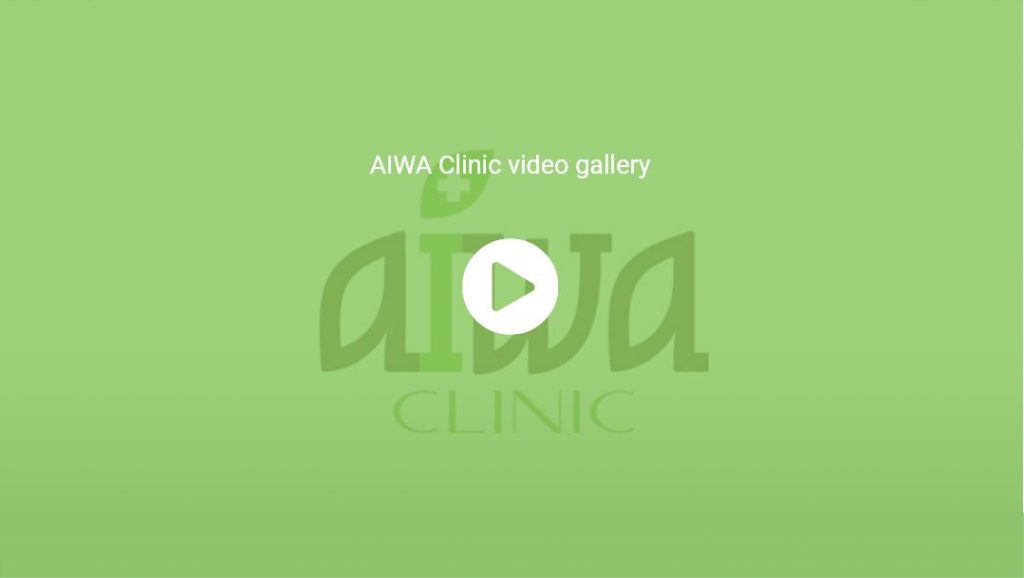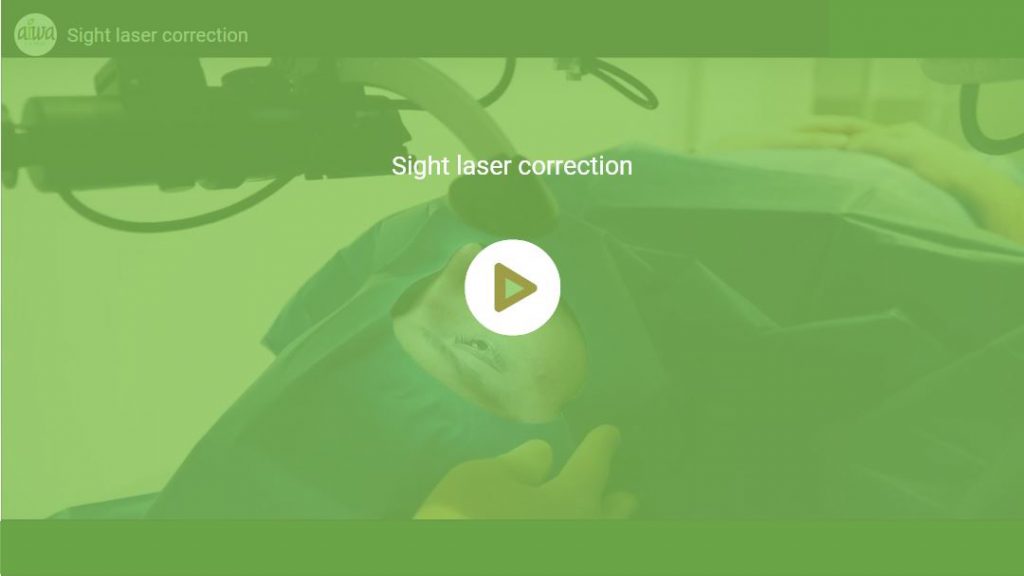ophthalmology
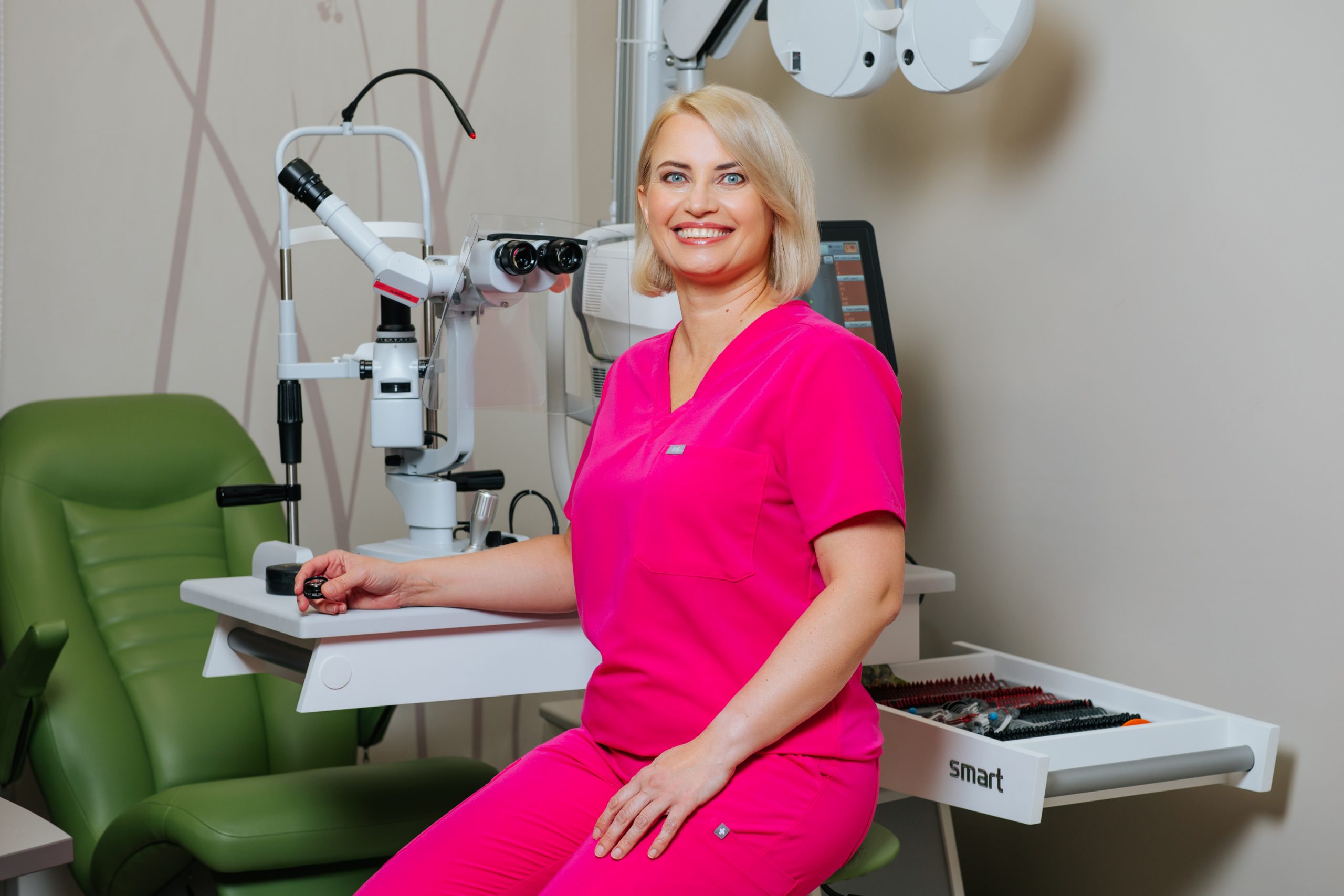
Aiwa Clinic’s range of services includes various ophthalmology services, which are provided by highly qualified ophthalmologists using the latest and most modern technologies. Aiwa Clinic provides ophthalmology services to its patients in both publicly paid and paid eye surgeries, helping them to regain eye health while improving their quality of life.
When do you need to visit an oculist?












AIWA Clinic offers wide range of ophthalmology services
Patients at Aiwa Clinic receive a variety of services managed by highly qualified specialists. They diagnose various eye diseases and do medical operations, such as glaucoma surgery, cataract surgery, plastic and reconstructive surgeries.
Glaucoma and cataracts requires early diagnosis to avoid rapid deterioration of vision or complete loss of vision. And for patients who want to improve their vision, Aiwa Clinic offers laser vision correction surgery using the latest generation technology.
Laser vision correction
Laser sight correction is a modern method of preventing myopia, farsightedness or astigmatism. The effects are instant and the quality of sight improves right after the operation. Choose AIWA Clinic professional specialists and feel safe!
Operation
We use a state-of-the-art technology excimer laser ZEISS MEL-90. AIWA Clinic employs professional and experienced specialists who provide a customised approach and treatment with the help of laser correction LASIK surgery. The procedure uses the state-of-the-art excimer laser ZEISS MEL-90, which provides excellent sight in patients with near-sightedness (myopic refraction), farsightedness (hypermetropic) or astigmatism. Currently, the LASIK method is the most commonly used surgical sight correction method in the world. Sight improvements are noticeable right after laser surgery.
Frequently asked corrections:
1. Can I undergo sight correction?
Before the operation, you must undergo an in-depth examination, which lasts about 90 minutes (price: EUR 75). During the examination, the specialist fully examines your eyes to prepare an individual programme appropriate for you. The LASIK method allows to correct myopia (up to -8.00), farsightedness (up to +4.00) and astigmatism (up to 4.00).
2. How old do I have to be to undergo laser correction?
Laser correction of this kind is recommended for patients aged 18 to 45 years.
3. In what instances is laser correction not performed??
During the consultation, the suitability of both the patient’s eye structure and general health for refractive laser surgery will be assessed.
It cannot be used in people with systemic diseases, such as people with diabetes, pregnant women, women who are breast-feeding, patients with unstable sight in the last 12 months and in the case of eye disease, or during illness.
4. What are the guidelines that I need to observe in relation to the operation?
Soft contact lenses must not be worn for one week before surgery. If the patient uses hard contact lenses, these should not be worn for one month before surgery. The day before the procedure is not recommended to use cosmetics (makeup), perfume. Do not drink alcohol. We recommend not to wear fluffy clothes.
5. Will I feel pain during the operation?
The operation is conducted under a local anaesthetic – drops. Therefore, you will not feel any pain.
6. Will I be able to go home after the operation?
Yes. On the day of the operation you will spend about 2.5-3 hours in the clinic. The operation takes about 15 minutes, but the laser effect – only a few seconds.
You may have blurred sight or watery eyes until the next day, so we recommend that you avoid driving.
Outdoors, your eyes should be protected with sunglasses, because they will be sensitive to light for 2-3 days.
7. What will I have to do after the operation?
The day after the operation, you must attend a post-operation consultation (free of charge). The next three tests should preferably be performed by an optometrist AIWA Clinic.
During the first week of laser sight correction surgery, it is recommended that you:
- do not rub or touch your eyes with your hands,
- do not use make-up (in the eye area),
- avoid physical exertion (especially with the head down),
- protect your eyes from wind, dust, smoke, etc. when going outside and wear sunglasses,
- avoid swimming underwater and getting water in your eyes,
- do not visit the sauna and solarium,
- use eye drops in accordance with your doctor’s advice.
8. When will I notice the improvement in my sight?
Your sight will improve immediately after the operation, the next day the ability to work is restored. The result of the postoperative is guaranteed. If sight changes within 3-6 months, additional surgery for maximum results is performed free of charge.
Surgery of cataract
A cataract is a clouding of the natural clear lens of the eye. Lens clouding is caused by the loss of fluid in it. A lens affected by a cataract gradually loses its transparency and becomes denser and opaquer, almost like a dirty window through which it is difficult to see.
Cataract treatment
The only effective cataract treatment is surgery. Besides, in 98% of cases, it is possible to restore vision to the state that was before the onset of the disease! The natural lens of the eye is replaced by a transparent artificial one. The operation itself lasts an average of 15-20 minutes and usually, general anesthesia is not required. Within a month, a certain postoperative regimen must be observed.
What are the causes of eye cataracts?
A cataract occurs gradually over many years, but it can also be caused by diseases, injuries to the eyes or head, radiation, smoking, various general, or ophthalmic medication. Cataracts are also observed in children.
Cataracts significantly impair the quality of vision.
Signs and symptoms of cataracts
Blurred vision (for both near and far distance with glasses)
Vision is checked using eye charts or projectors. Corrective lenses are used to make sure that the reason for the loss of vision is not inappropriate correction with glasses. In the case of a very cloudy lens, the patient sees only light.
Myopization – observed in patients who previously used (+) glasses for reading – they begin to read without glasses, but those who had (-) glasses, (-) strength increases.
Glare from light sources – even slight clouding of the lens can cause glare from light sources.
Doubling (looking with one eye) – if we close a healthy eye, then, looking with a sick eye, we see two objects in one place.
Decreased contrast vision – with reduced contrast vision, it is more difficult to distinguish objects, navigate the environment, recognize faces, and perform everyday tasks.
Changes in color vision – when the lens becomes cloudy, it also changes color. Often, a natural lens appears yellow or even pinkish. Patients may not notice changes as they occur gradually.
Causes of cataracts
• Aging. The lens consists mainly of water and protein. Over the years, these proteins are destroyed and cataracts develop.
• Congenital protein defect, genetic disease, or intrauterine infection
• Eye injury
• Eye surgery
• Eye inflammation
Contributing factors
• Exposure to ultraviolet light (sun)
• Smoking
• Diabetes
• The use of medication – steroids, tamoxifen, cytostatics, other drugs that are less associated with cataract progression (for example, statins, diuretics, hormone replacement therapy, tranquilizers, etc.).
• Stress
How to diagnose the disease timely?
Reaching the age of 40, an ophthalmologist needs to be visited once a year!
Preoperative diagnostics
The patient should be fully examined before surgery – the doctors examine the anterior part of the eye in a slit lamp and with an enlarged pupil, they examine the deeper parts of the eye. Besides, the ophthalmologists measure eye pressure and check visual acuity for far and near distances. They perform ultrasonography of the eyeball to exclude eye diseases in which cataract surgery cannot be performed. Also, the ophthalmologists calculate the desired strength of the artificial lens.
Family physician before surgery:
• Normalizes arterial hypertension
• Cancels blood thinners (if possible)
• Eliminates acute inflammatory processes in the body
• It is advisable to provide the ophthalmologist with information about diagnoses and medications used. The ophthalmologist is interested in bronchial asthma, diabetes mellitus, skin diseases, oncological diseases, allergic diseases (anesthesia, iodine, etc.).
By choosing a monofocal intraocular lens of the appropriate strength, with cataract surgery, the desired refraction can be achieved. This means that, for example, if the patient wore glasses with a strength of + 3 diopters for a far distance, the surgeon during the operation can insert an artificial lens, in which he does not need to wear glasses for a far distance. Using toric intraocular lenses, during surgery, you can get rid of astigmatism (glasses with cylindrical lenses), but by choosing premium multifocal intraocular lenses, from wearing glasses for far and near distances.
Treatment of glaucoma
Glaucoma is an eye disease for which early diagnosis and treatment are very important, as it can progress to complete loss of vision. Therefore, a consultation with your doctor, noticing the first symptoms of the disease, is the most important task.
Glaucoma treatment
Glaucoma is usually treated with medications that reduce the pressure inside the eye, and only if they do not work, it is treated surgically, which improves the circulation of intraocular fluid. When doing this operation, most patients subsequently do not need any additional treatment, since the disease is stopped.
What are the causes of glaucoma?
Glaucoma is damage to the optic nerve. Scientists are still arguing about the real cause of the disease. Since the exact cause of glaucoma is unknown, it cannot be cured one hundred percent. However, you can significantly slow down the progression of the disease and not lose sight. If a person is diagnosed with glaucoma, the doctor’s recommendations must be followed. The untreated disease causes irreversible blindness.
Symptoms of glaucoma
There are primary or open-angle glaucoma and closed-angle glaucoma. It often happens that at first glaucoma develops in only one eye. Since visual acuity persists, and the other eye compensates for impaired functions, a person does not experience discomfort, which indicates the need to consult a doctor.
The most common symptoms are:
• Blurred vision
• Feeling of heaviness in the eye or eyebrows
• Eye fatigue, sometimes stinging sensation in eyes
However, these complaints are also common among people who use a computer every day, read a lot. People usually do not pay much attention to these signs, believing that their eyes are tired after work. However, when a person feels a deterioration in vision, irreversible changes have already begun. Often many fibers of the optic nerves are already lost, and therefore it is difficult to maintain vision. This is because it is the optic nerve that transmits the information received by the eye to the brain. If the nerve is damaged, it can no longer fulfill its function and a person complains of visual impairment, most often a narrowing of the field of vision.
Angle-closure glaucoma shows other symptoms. Usually, it begins with an acute attack, when the pressure inside the eye rises, the eye turns red, the pupil is enlarged. There is a feeling of heaviness or severe pain in the eyebrows and forehead, blurred vision, nausea, vomiting, and heart problems are possible.
How to diagnose the disease timely?
Reaching the age of 40, an ophthalmologist needs to be visited once a year!
The most important is the measurement of intraocular pressure, which should be between 10- and 21-mm Hg. The measurement of intraocular pressure by modern methods no longer causes discomfort to the patient. Modern technologies also allow you to measure the fibers of the optic nerves and compare their condition every year, timely detecting the changes caused by glaucoma. It is important to regularly monitor eye pressure so that it can be observed in dynamics. It is assumed that each person may have their rate of pressure, but there are no tests to determine it. The only way to detect glaucoma timely is the examination by an ophthalmologist. It includes not only measuring pressure but also checking visual acuity, biomicroscopy, a thorough examination of the fundus, and determining the field of vision using computer perimetry. During the examination, a liquid is instilled into the eye, which dilates the pupil of the eye so that the optic nerve can be well examined. Glaucoma is most often indicated by the narrowed and serrated edge of the optic nerve, it’s fading, changes in the blood vessels of the optic nerve.
Increased risk of glaucoma
• For elderly people. Over the age of 60, glaucoma affects an average of 4.2% of the population, and 1.5% between the ages of 40 and 49.
• Those who have glaucoma in their families. If parents or other close relatives suffer from this disease, it is necessary to visit an eye doctor once a year from the age of 35 for prevention purposes.
• Patients with increased intraocular pressure.
• People who have experienced other eye diseases or injuries. The latter increases the risk of developing glaucoma in 2-10% of cases.
• People with a high degree of myopia are at risk of developing open-angle glaucoma, while people with a high degree of hyperopia are at risk of developing angle-closure glaucoma.
• People with low blood pressure. This is because these people often complain about the freezing of their hands and feet, which indicates circulatory problems. Accordingly, doctors allow circulatory disorders throughout the body, including the eyes.
• Diseases such as high blood pressure, cardiovascular disease, diabetes, and high blood cholesterol are also risk factors for glaucoma.
• Smoking increases the risk of glaucoma.
• A thin cornea increases the risk of glaucoma.
Intravitreal injections for the treatment of retinal diseases
Intravitreal injections are a widely used treatment method in ophthalmology, which is used to inject the medicament into the vitreous body to treat retinal diseases. It is performed under local (drip) anesthesia under sterile conditions (operating room).
Often, the disease begins in only one eye, and the feeling of symptoms can occur late, so preventive visits to check eye health are especially important.
Treatment process and benefits
More recently, it was not yet possible to help such patients. Now the latest technology allows you to temporarily or even completely stop the development of retinal dystrophy.
The procedure in which medications are injected into the eyeball ensures the delivery of the drug to damaged tissues of the eye.
Most commonly used medicines:
• Anti-VEGF (ranibizumab, bevacizumab, aflibercept) – anti-VEGF medication has been available for intravitreal injection since 2004 for the treatment of retinal dystrophy. They block the action of the vasoproliferative factor, which stimulates the growth of endothelial cells and the formation of new (fragile) blood vessels. Usually, 3 injections are made, and then the state of the retina is monitored using an optical coherence tomography (OCT). The patient should use eye drops before and after the injection to prevent inflammation.
• Steroids (Kenalog) – for the treatment of a wide range of eye diseases, such as retinal edema after cataract surgery.
Causes and contributing factors
Age is a major risk factor for retinal dystrophy.
Age-related macular degeneration is divided into two forms: dry and wet. For the treatment of the dry form, preventive therapy is most important, and for the treatment of the wet form, anti-VEGF medication.
It is important to track and compare changes in the state of the retina using OCT (optical coherence tomography), which allows you to notice minimal changes and take timely action.
Therapeutic laser vision correction
With the help of therapeutic laser surgery, you can successfully solve:
• The problem of irregular astigmatism that occurs after injuries, diseases, if the surface of the cornea is uneven;
• Some forms of corneal dystrophy;
• If it is necessary to grow a new epithelium on the cornea, for example, after eye injuries. With the help of therapeutic laser surgery, you can remove the old epithelium – then a new healthy epithelium will form itself.
Treatment
If there is an asymmetric surface change on the surface of the cornea, the laser topographic device calculates for a particular cornea a suitable ablation map, which is realized by the laser. The patient undergoes a topography of the cornea and has the measurement of the depth of the lesion. During the procedure, the correction is performed at the required depth without affecting the healthy tissue of the cornea.
Eyelid formation and aesthetic operations / blepharoplasty
Reconstructive and aesthetic surgeries on the eyes and eyelids make it possible to solve problems with the patient’s eyes both functionally and aesthetically, not only improving visual function but also eliminating undesirable visual factors, such as reducing aging signs, which can be especially noticeable in the eye area and may cause some discomfort.
Nowadays, you no longer need to put up with droopy eyelids, because there are several types of blepharoplasty that help correct sagging eyelids. It is a plastic surgery that removes excess skin and fat from the upper and lower eyelids. The choice of a particular type of treatment depends on the particular case. However, only a specialist – an ophthalmic surgeon – can determine the cause of sagging eyelids and set the correct surgery.
Even after various eye injuries, successful reconstruction of the eyes and eyelids is possible, as well as surgery on the eyelids or operation of conjunctival neoplasms and removal of the lacrimal sac.
Our surgeon-ophthalmologist also performs reconstruction of the conjunctival cavity, correction of the inverted eyelids, excision of neoplasms on the skin of the eyelids, treatment of trichiasis, etc.
Treatment process
AIWA Clinic specialists will carefully evaluate the individual complaints of each patient, assess the need for appropriate surgery, and prescribe the most appropriate treatment.
Blepharoplasty is performed without visible incisions using minimally invasive surgery. However, in any case, this is a serious operation, which requires not only the high skill of the surgeon but also the responsible attitude of the patient himself.
All surgeries are performed using world-famous and modern technologies that are minimally invasive and gentle. Recovery after surgery is quick and the patient can quickly return to normal life.
The advantage of blepharoplasty over all other surgical methods is that the patient is immediately freed from the senile appearance and looks 10-15 years younger.
Tear duct endoscopic surgery
In most cases, increased lacrimation from the eyes indicates problems in the lacrimal canal, and some eye diseases can cause this lacrimation.
Problems with the lacrimal canal cause extreme discomfort even in everyday work, but for a long time not solving this problem, it can become an obstacle to learning certain professions and performing duties.
Treatment
Of course, not all problems of lacrimation should be solved surgically, but if the tear drainage system is blocked, only surgery can help. AIWA Clinic performs this operation together with otolaryngologists who specialize in diagnostic, therapeutic, and various otolaryngologic operations endoscopically, which is a minimally invasive method at the highest level following the modern world standards and requirements.
Vision screening for children before school
Apply for a vision screening for children (from 6 years and older) before school now and receive a certificate requested by school. We invite you to apply in time to avoid queues at the end of summer.
Today, children have a much greater strain on their eyes because they spend time at computers, smartphones, and often in inadequate lighting, being too close to the device screen and in an unnatural position. Eyestrain can increase by 3-4 times, which can negatively affect the child’s visual system. Pay close attention to your child’s vision and make sure that your child sees the world in bright colours.

Health of your eyes – early diagnosis and treatment
Since vision is one of the leading senses of an individual, which allows it to function properly, eye health is the one that must be taken care of at any age. Any short-term or long-term discomfort in the eyes can indicate a problem, so an early visit to an oculist allows you to diagnose the problem as quickly as possible, recommend the best solutions and start treatment immediately.
Using the latest methods and technological solutions, ophthalmologists of AIWA Clinic can successfully treat eye health problems and improve in most cases even completely the quality of vision. However, the most important thing is whether the patient himself turns to a specialist in time during preventive examinations or in case of complaints.
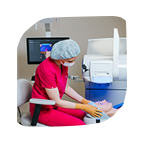
Laser vision correction
Laser vision correction is performed by specialists to improve the patient’s vision without correction means (glasses, contact lenses, etc.), examining each patient individually and providing with the most suitable solution for laser correction. Most patients who have successfully improved or even 100% regained excellent vision say it feels like seeing the world anew. Clarity, sharpness and quality of vision are not comparable to wearing glasses or contact lenses. Laser correction is an effective procedure that provides a positive and lasting result for life. Apply for a visit to find out how AIWA Clinic can help you!

Aesthetic reconstruction of eyelids
The skin of the human body is constantly changing throughout a lifetime. Sometimes these changes are small, but sometimes they can be noticeable and disturbing, especially in the area of the eye, which over time begins to bother patients functionally and aesthetically. Reconstructive and aesthetic eye and eyelid surgery done by our professional doctors solve these problems with the highest quality and precision. Our greatest satisfaction is our patient’s happy eyes when they see the result. Take a first step and talk to a doctor!
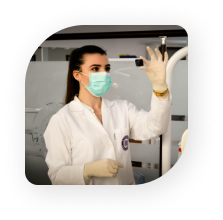
Taking care of your eye health and vision
There are different risks of eye disease at each age, and these risks only increase with age, so it is important to take into account the doctor’s recommendations for preventive visits at least once a year at any age to diagnose and prevent vision loss. Eye care must be taken daily by each person individually, but in situations where this is no longer possible, our clinic specialists take these care into their own hands with full responsibility and attention

Eye health is a topical issue in all age groups, which is directly affected by the intensive use of computers and other screens, which contributes to eye fatigue, causes dryness, tension, blurring and can affect vision. Therefore, the work and rest area should be arranged by the principles of ergonomics, which take into account the required height, brightness, angle of incidence, and other aspects, avoiding any discomfort. Children and young people must be sure to observe the optimal duration of use of the screens.

If daily work involves the use of a computer, regular preventive vision tests should be performed at least once a year. Eye rest is just as important as whole body rest, so eye relaxation exercises and breaks at the computer should be introduced as an integral part of everyday life. If it is necessary, the ophthalmologist will perform a vision test and prescribe suitable glasses for both vision correction and work directly at the computer. Ophthalmology includes not only the therapeutic and diagnostic stages, but also works with the preventive side of the field, telling patients how they can protect their vision, avoid diseases and injuries.

The eyes can suffer from mechanical injuries, so work safety regulations must always be followed carefully, protecting the eyes from foreign bodies entering them, as well as from chemicals that come into contact not only in the work environment but also at home.

Special eye health care is needed after the age of 40 when the risk of developing various diseases increases. As the incidence of cataracts and glaucoma are increasing in Latvia, at this age, the ophthalmologist should be visited regularly for tests and examinations in dynamics so that the disease can be diagnosed in good time. Timely cataract surgery allows for complete restoration of vision to the previous quality in as many as 98% of cases. Cataract surgery at AIWA Clinic is available both for a fee and as a state-paid service.
An ophthalmologist is a directly accessible specialist who does not require a referral from a family doctor.

